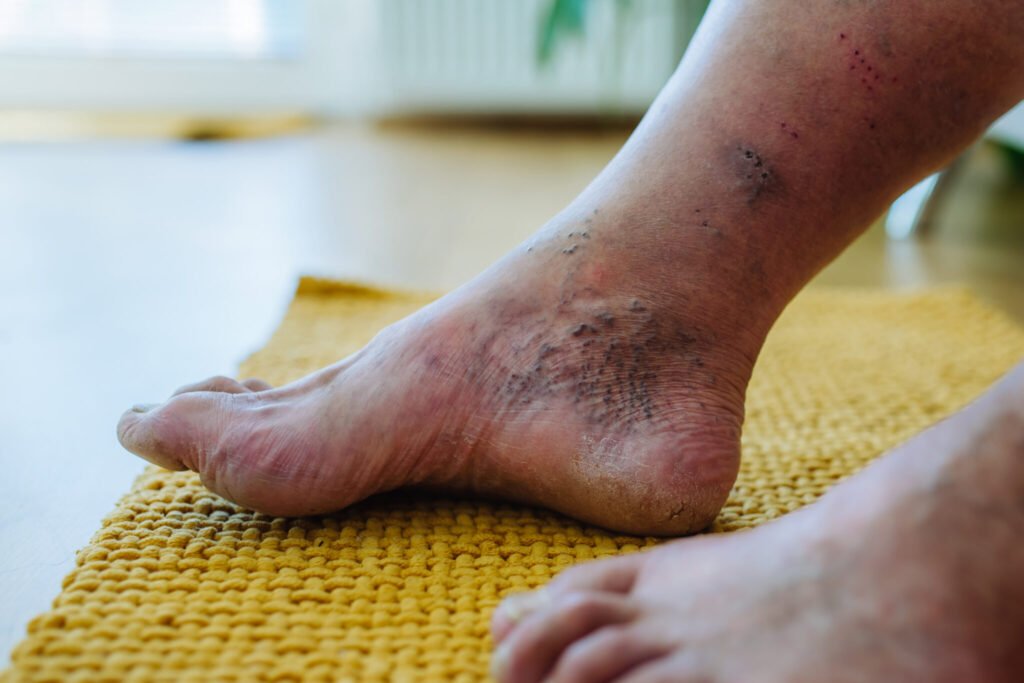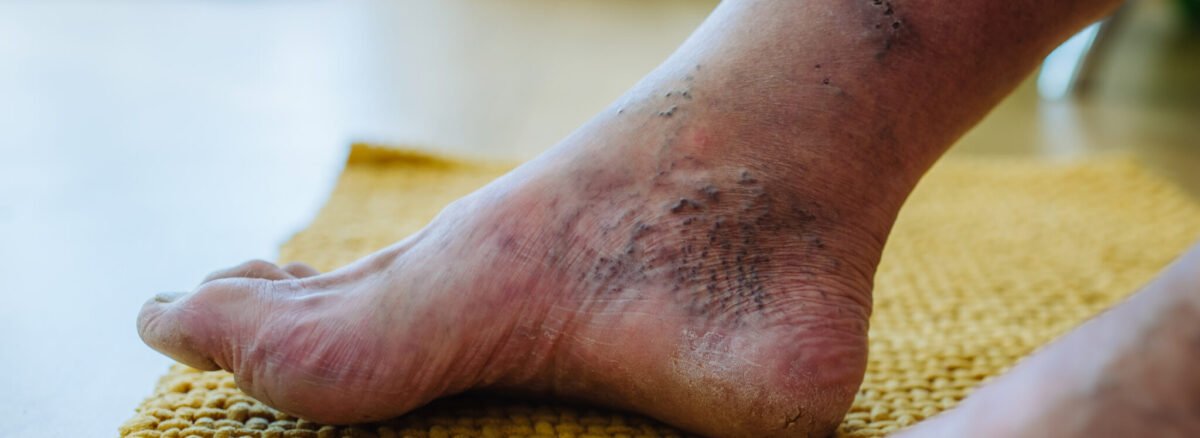- August 4, 2025
- havishahealthcare.com
- Comment: 0
- Uncategorized
How to Heal Diabetic Foot Fast: Complete Guide to Recovery & Care 🦶✨

Introduction
Diabetic foot ulcers and infections are one of the most common and serious complications faced by people with diabetes. If left untreated, they can lead to severe infections, hospitalization, and even amputation. Healing diabetic foot quickly requires a combination of early intervention, proper wound care, infection control, blood sugar management, and professional medical treatment.
In this comprehensive guide, we will explore everything you need to know about how to heal diabetic foot fast — from understanding the causes and symptoms to effective treatment options and prevention strategies. Whether you or your loved one is dealing with diabetic foot complications, this blog will equip you with essential knowledge to promote faster healing and avoid severe outcomes.
Table of Contents 📋
1. What is Diabetic Foot? 🦶
A diabetic foot refers to various foot problems caused by complications from diabetes, including ulcers (open sores), infections, nerve damage (neuropathy), and poor blood circulation (peripheral arterial disease). These complications reduce the foot’s ability to heal and fight infections, making even minor injuries dangerous.
Diabetic foot ulcers are open wounds that usually develop on pressure points such as the bottom of the foot or toes. These ulcers can deepen and become infected, leading to tissue damage or gangrene if not treated promptly.
2. Causes of Diabetic Foot Ulcers ⚠️
Understanding the causes is the first step in effective treatment. Key causes include:
Peripheral Neuropathy: High blood sugar damages nerves, reducing sensation and causing injuries to go unnoticed.
Poor Circulation: Diabetes narrows blood vessels, limiting oxygen and nutrient supply needed for healing.
Foot Deformities: Structural changes increase pressure on certain areas, promoting ulcer formation.
Repeated Trauma: Walking or standing causes continuous pressure on vulnerable skin.
Infections: Minor wounds can quickly get infected due to weakened immune defense.
Delayed Wound Healing: High glucose impairs natural healing processes.
3. Common Symptoms & Warning Signs 🚩
Early recognition of diabetic foot problems can prevent complications:
Redness, swelling, or warmth in the foot
Open sores, cuts, or ulcers that do not heal
Drainage or foul odor from wounds
Pain, tingling, or numbness (neuropathy)
Skin color changes or darkened areas
Thickened or discolored nails
Foul smell or pus indicating infection
Fever or chills (infection spreading)
4. How Does Diabetes Affect Foot Healing? ⚡
Diabetes interferes with healing in several ways:
High blood sugar impairs white blood cells’ ability to fight infection.
Reduced blood flow delays oxygen and nutrient delivery to wounds.
Neuropathy causes patients to ignore injuries, leading to worsening ulcers.
Chronic inflammation impedes tissue repair.
Increased risk of bacterial colonization due to a weakened immune system.
5. Importance of Early Treatment ⏳
Prompt treatment improves healing outcomes and reduces risks of complications such as cellulitis, abscess formation, bone infection (osteomyelitis), and amputations. Early intervention also minimizes healthcare costs and improves quality of life.
6. Step-by-Step Guide: How to Heal Diabetic Foot Fast ✅
Step 1: Clean and Protect the Wound
Wash gently with saline or mild antiseptic
Avoid harsh soaps or hydrogen peroxide that damage tissue
Pat dry carefully
Step 2: Offload Pressure
Use special footwear, orthotics, or crutches to avoid weight-bearing on ulcers
Protect vulnerable areas from further trauma
Step 3: Control Infection
Use topical antibiotics as prescribed
Oral or IV antibiotics for severe infections
Step 4: Manage Blood Sugar
Maintain tight glucose control through diet, medication, and monitoring
Step 5: Debridement
Removal of dead tissue by healthcare professionals to promote healthy tissue growth
Step 6: Dressings
Use appropriate wound dressings to maintain moisture and protect the wound
Step 7: Monitor Progress
Regularly check for signs of infection or worsening condition
Visit your healthcare provider frequently
7. Wound Care Best Practices for Diabetic Foot Ulcers 🩹
Use sterile gloves and clean tools during dressing changes
Avoid walking barefoot to prevent new injuries
Change dressings as advised to prevent infection
Keep feet dry but moisturized (except wounds)
Avoid using over-the-counter creams without doctor approval
8. Role of Blood Sugar Control in Healing 🎯
Maintaining blood sugar in the recommended range is critical because:
It enhances white blood cell function
Reduces inflammation
Promotes collagen synthesis and new tissue formation
Prevents further nerve damage
Work with your endocrinologist to optimize medications and diet.
9. Medical Treatments and Therapies 🏥
Antibiotics: For infections
Debridement: Surgical or mechanical removal of dead tissue
Hyperbaric Oxygen Therapy: Increases oxygen delivery to the wound
Skin Grafts: For large or non-healing ulcers
Negative Pressure Wound Therapy (Vacuum-assisted closure): Promotes healing by applying suction to the wound
10. Nutritional Tips to Boost Healing 🍎🥦
Nutrition plays a vital role in wound healing:
High protein diet to support tissue repair
Vitamins A, C, and E for skin health
Zinc and iron for immune function
Stay hydrated
Avoid excessive alcohol and smoking
Consult a dietitian for a personalized plan.
11. Preventing Diabetic Foot Ulcers and Recurrence 🚶♂️👟
Daily foot inspection for cuts, blisters, or swelling
Proper foot hygiene
Wear comfortable, well-fitting shoes
Avoid walking barefoot
Regular podiatrist check-ups
Manage blood sugar and other comorbidities like hypertension and cholesterol
Quit smoking
12. When to See a Doctor: Warning Signs Not to Ignore ⚠️👨⚕️
Wound not healing after two weeks
Increasing redness, swelling, or warmth
Pus or foul smell from wound
Fever or chills
Severe pain or numbness
Skin color changes or blackened tissue
13. FAQs About Diabetic Foot Healing ❓
Q1: How long does it take to heal a diabetic foot ulcer?
A: Healing time varies but can range from weeks to months depending on severity and treatment.
Q2: Can diabetic foot ulcers be cured completely?
A: Yes, with proper care and management most ulcers can heal completely.
Q3: Is surgery always necessary?
A: Surgery is needed only for severe infections, gangrene, or when conservative treatment fails.
Q4: How can I reduce the risk of recurrence?
A: Maintaining blood sugar control, proper foot care, and regular medical check-ups.
14. Testimonials: Real Patients’ Healing Experiences 💬
“I had a diabetic foot ulcer that was not healing for months. Thanks to the expert care and wound management at Havisha Healthcare, my foot healed completely in just 6 weeks. I feel grateful for their support.” – Mr. Ramesh, Coimbatore
“The team helped me understand how to take care of my diabetic foot properly, and their advanced treatment saved me from amputation. Highly recommended!” – Mrs. Lakshmi, Madurai
15. About Our Hospital, Doctors & Facilities 🏥
At Havisha Healthcare, we specialize in diabetic foot care with a multidisciplinary approach combining endocrinology, vascular surgery, podiatry, and wound care. Our expert team, led by Dr. Hari Hara Jothi (MBBS, MCPhleb, ECoP, CCDFM), uses the latest technologies including laser therapy, hyperbaric oxygen, and advanced wound dressings to ensure the fastest and safest healing for your diabetic foot.
We have conveniently located hospitals in Coimbatore and Madurai, equipped with dedicated diabetic foot clinics, modern wound care units, and compassionate staff to provide personalized care.
Facilities include:
24/7 wound care and emergency services
Diabetic education and counseling
Comprehensive vascular assessments
Customized services

